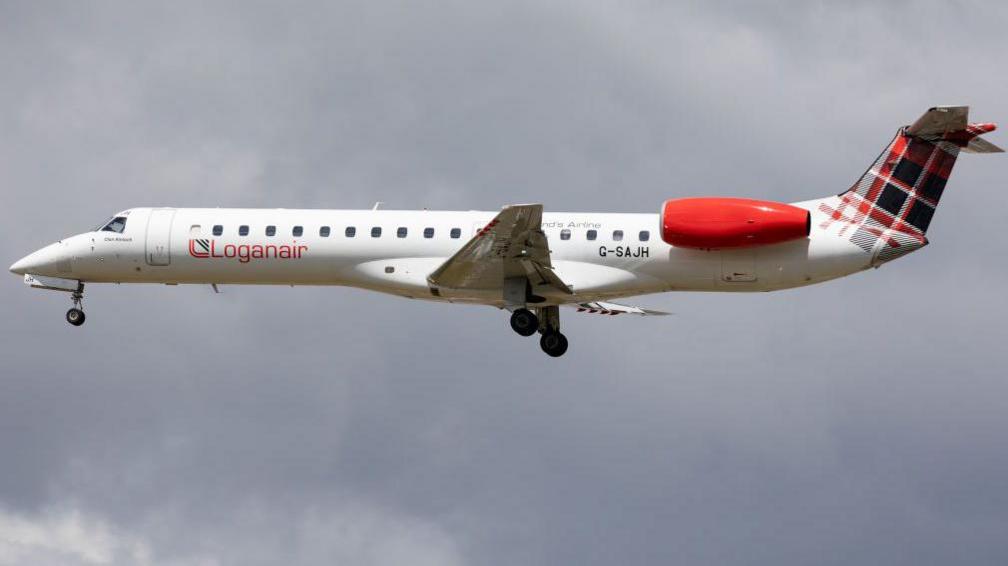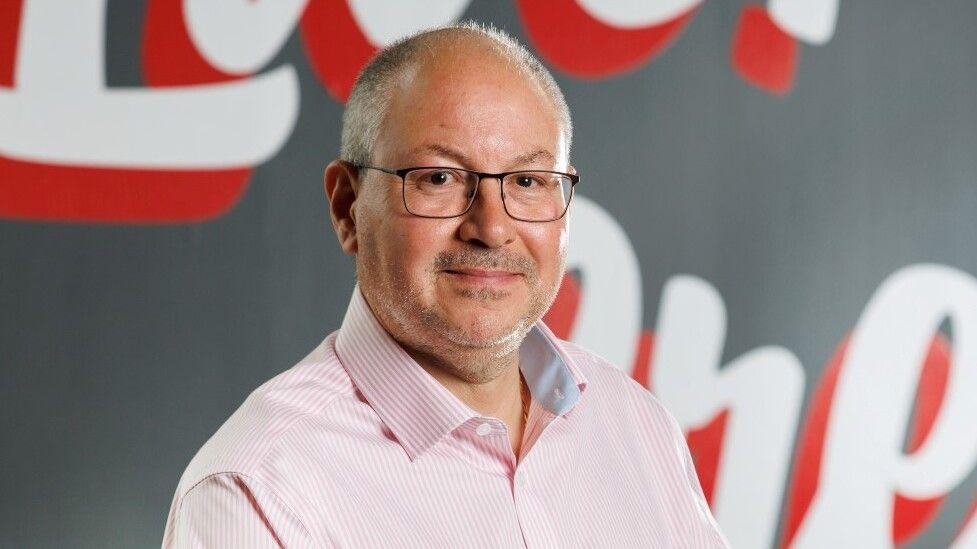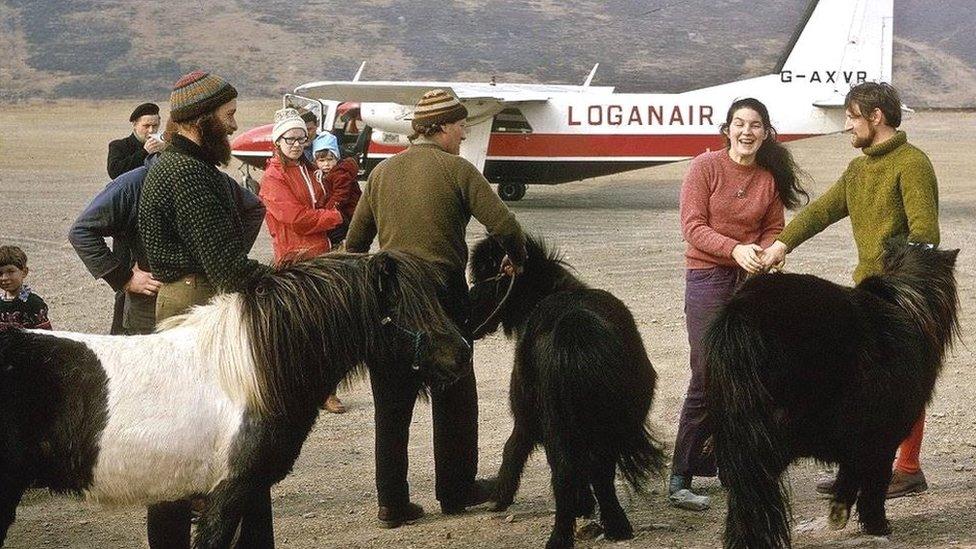Vital air route for NHS patients hard to sustain - Loganair chief

Loganair has been flying in the Highlands and Islands for 60 years
- Published
The boss of Loganair, the UK's biggest regional airline, says one of the most important air routes for NHS patients is hard to sustain at current passenger levels.
Luke Farajallah warns that "discussions" are needed with the Scottish government to ensure there are funds to retain flights between Inverness and Stornoway, which have low passenger numbers.
However, he says patients who use the airline to get to medical appointments in Scotland's cities are in a better position after he axed other routes to improve reliability.
He also said services that support the oil and gas industry in Aberdeen and Shetland are holding up well, despite talk of a downturn.
The chief executive was speaking to BBC Scotland News six months after taking command at the Glasgow-based airline.
Having been a feature of Highlands and Islands air services for more than 60 years, Loganair has recently expanded to take on routes previously flown by defunct airlines BMI Regional and FlyBe.
'Enablers of growth'
New and larger aircraft have recently been added to the 38-strong fleet, and Mr Farajallah says he intends to increase that by two each year, gradually adding routes and frequency.
He said the best prospects for new routes are between England's north-east and south-west as well as Wales, with strong potential to grow passenger traffic in and out of Cardiff.
But the industry faces a challenge to reduce its carbon emissions, and could face higher passenger tax in the Budget next week.
The chief executive urged government to treat aviation as a driver of economic growth, rather than seeing it as a polluter.
He called on all governments "to look at airlines as enablers of growth, not inhibitors or problematic for the environment.
"We make an enormous difference to moving people quickly and efficiently around the country."

Luke Farajallah says discussions are needed with the Scottish government
Mr Farajallah cut back on routes when he took over to ensure that the remaining ones reduced the number of delays and cancellations.
Three routes were axed, Glasgow-Southampton, Aberdeen-Teesside and Aberdeen-Newcastle, while seven had frequency reduced.
He said improved reliability was particularly important for those using Loganair services to get to NHS appointments - which includes passengers flying from remote areas to city clinics or medical professionals flying from cities to island consultations.
Loganair looks to the Scottish government to subsidise some of its island services. It recently marked 50 years since it took over the service for Barra and Tiree.
But Mr Farajallah said the services still need to be financially viable, which is why Loganair ceased its Stornoway-Benbecula service.
He acknowledged that low passenger numbers on flights between Inverness and Stornoway made it a difficult route to sustain.
He also called on the Scottish government to retain subsidised half price fares for islanders flying off the islands, saying these have proven very important for people in rural communities without the income to afford full-price fares.
Meanwhile, he said international passengers, particularly arriving in Edinburgh, have given Loganair a boost in recent months as they then take flights around the UK.
Loganair exploring use of hybrid-electric aircraft
- Published4 September 2024
Airlines asked to bid for patient transfer service
- Published18 June 2024
Recently published figures for Scottish tourism in general show a strong year for inbound visitors.
"We have increased frequency on Edinburgh-Southampton," he added. "The cruise ship market out of Southampton is especially buoyant.
"We're also looking at other regions of the UK which don't necessarily have that connectivity to the south coast or London.
"We believe Cardiff offers great opportunities. We fly Edinburgh to Cardiff, which is very popular and there is potential expansion there.
He said the north-east and south-west of the country were areas that could be more connected by air.
Mr Farajallah added: "They're quite complex to drive and involve multiple changes of train. So an air service could be a good match.
"Our challenge of course, is what type of aircraft to offer, what frequency, what times of day and what fares. Those are the things we have to consider on a new route."

Loganair routes have been cut back to reduced delays and cancellations
The chief executive said passenger traffic around Aberdeen and Shetland was holding up well.
"We've seen some growth in that over the last 18 months," he said. "We feel oil and gas has been going through a resurgence, and we haven't seen any sign of that abating.
"Our strategy would be to provide as many services as required for that region. There's a new phase when there's a slowdown.
"There will be a decommissioning phase which will last years. Loganair is very prominent in Aberdeen and Shetland, and we intend to be for many years to come."
Loganair has said it intends to have reached net zero in its operations by 2040, and has taken initiatives on battery-electric aircraft and development of hydrogen-powered flight.
"The solution to net zero is going to come from multiple sources and different angles and small incremental changes. We're working with Cranfield University on a hydrogen cell engine for the islanders which operate the islands in the north of Scotland."
Mr Farajallah said the best Loganair prospect for an early win was a venture with Heart Aerospace to build a battery-electric supply for a conventionally-designed aircraft.
"If you take any one of those initiatives, they're not going to deliver the solution," he added.
"But if you do those and more, eventually there will be a dial-changing element which will move us much closer to that aspiration to be net zero by 2040."
Related topics
- Published5 October 2023

- Published27 December 2022
